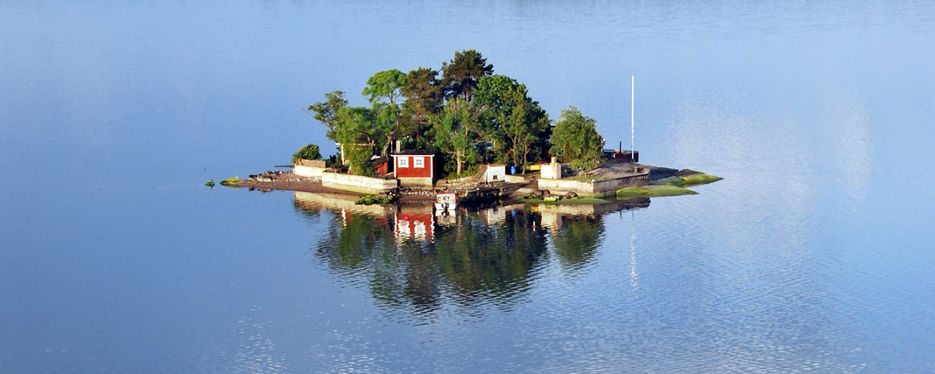Water levels along our coasts and in our lakes are extremely important for settlements, roads, natural environments and important public services. Many different processes and factors affect the water levels of our lakes and seas.
In the short term, sea level is mainly affected by wind and atmospheric pressure. On a broader scale, in terms of both time and location, the mean sea level along the Swedish coasts will be affected by factors including sea level rise and the ongoing postglacial rebound. Lakes are affected most by precipitation, snow melting and regulations.
Sea levels
In a warmer climate, global sea level will continue to rise. This is mainly due to ice sheets and glaciers melting and thermal expansion caused by rising ocean temperatures (water expands when it warms). The effects of rising global sea levels will be most obvious in southern Sweden, where the land uplift is very small.
In average, sea levels along Sweden’s coasts have risen by more than 25 cm since the end of the 19th century, corresponding to 2 mm per year. Measurements have shown that the rate of rise has accelerated in recent years.
How much global sea level will increase and how fast will be due to how much the climate changes. The UN Intergovernmental Panel on Climate Change (IPCC) continuously compiles research on climate development.
Special Report on the Ocean and Cryosphere in a Changing Climate
Storms and strong low pressure troughs can result in rapid short-term increases in sea level (i.e. storm surges). Storm surge levels varies between different areas and different occasions, but record storm surges of more than one and a half meters have been observed at several of SMHI’s measurement stations. For land-based activities, it is primarily these storm surges that can cause problems, but sea level can also drop dramatically and thereby cause problems for shipping in particular.
Along Sweden’s coastlines, significant temporary increases in sea level mainly occur during the autumn and winter, and these storm surge events will continue to occur in the future. It is important to bear in mind that these events are measured with mean sea level as a starting point. This means that if mean sea level rises by a number of decimeters in the future, the actual water level in the event of a storm surge incident will likewise be much higher.
Lake water levels
The main factors controlling water levels in lakes are how much water flows into and out of the lake, how much precipitation falls on the surface of the lake, and how much water evaporates. Many lakes are regulated, with the water levels being controlled according to lake’s regulation scheme. Water regulation has particularly large impact on the rivers with many hydropower plants.
High water levels in lakes can cause flooding, with consequences for several sectors such as agriculture, infrastructure, settlements, power and water supply. On the other hand, low water levels may affect the shoreline. For Lake Mälaren and Lake Vänern, low water levels can results in serious problem for shipping . Shipping is a significant industry in these 2 lakes. In smaller lakes that are used as water sources, low water levels can cause problem for water supply.
How water levels in lakes are affected by climate change has no clear answer.. Some lakes may get higher water levels, while others – particularly in southeast Sweden – may experience low water levels. Seasonal variations in lake water level may also change.
